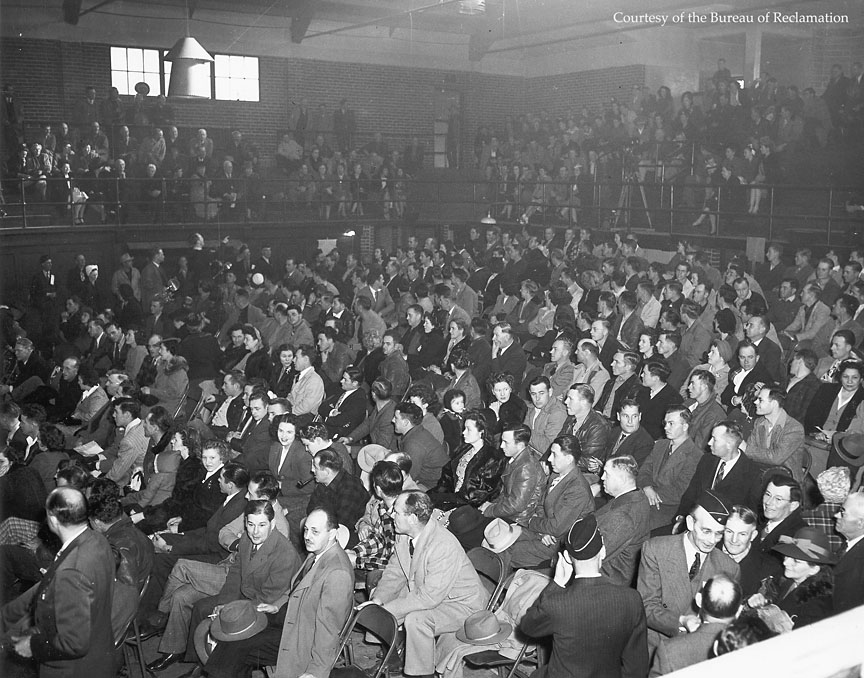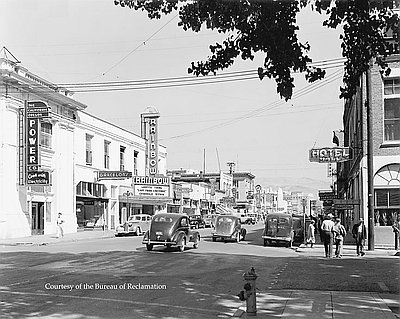- Catalog No. —
- BOR KP-1246-R2
- Date —
- December 18, 1946
- Era —
- 1921-1949 (Great Depression and World War II)
- Themes —
- Environment and Natural Resources, Geography and Places
- Credits —
- US Bureau of Reclamation, Klamath Basin Office
- Regions —
- Southwest
- Author —
- US Bureau of Reclamation
Klamath Homestead Drawing
Veteran homestead lotteries were established after World War I to reward soldiers and sailors with newly reclaimed land in the Klamath Basin. There were five different homestead drawings between 1922 and 1937. More drawings were scheduled, but were cancelled because of World War II.
In December 1946, the first of three post-World War II drawings took place in Klamath Falls. This photograph shows hundreds of soldiers and their spouses waiting anxiously for the names to be announced at a drawing in 1948. Between 1946 and 1949, more than 200 homesteads were awarded to veterans with at least two years of agricultural experience, $2,000 or more in personal savings, and proof of “honesty, temperance, thrift, and industry.” The gift of land and promise of unlimited irrigation was in exchange for populating the Klamath Basin and stimulating the economies in southeastern Oregon and northeastern California.
As a result of the twenty-first century water crisis in the Klamath Basin, many of the veteran homesteaders have felt “betrayed by their government” and have expressed feelings of hopelessness as to the future of farming in the area. Low precipitation and snowpack in 2000 forced the Bureau of Reclamation in 2001 to limit water to farmers in order to comply with the Endangered Species Act, which protects coho salmon, Lost River suckers, and shortnose suckers. Limited water supplies, resources farmers believed were allocated for irrigation, were needed to keep lake and river levels and conditions tolerable for fish.
Written by Robert Donnelly, © Oregon Historical Society, 2003.

